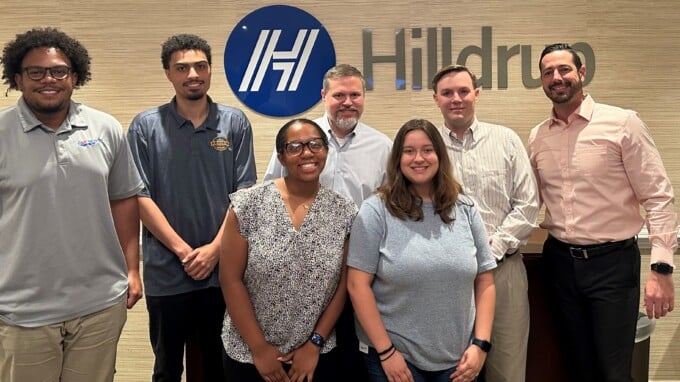Remote Working Trends: Talent Acquisition & Productivity
COVID-19 has changed our personal and professional lives in many ways, especially with the shift to remote work. Businesses and individual employees see both benefits and downfalls to this new way of working.

Without question, the pandemic redefined many aspects of our personal and professional lives. Arguably one of the most pronounced areas has been the seemingly overnight shift to remote work. Understandably, this has created a mix of challenges and opportunities for businesses and employees alike. As hope for the pandemic’s end grows, many are evaluating the success of their new or revised remote work policies and how they might be continued indefinitely.
How did remote work trends change in 2020?
Remote work certainly is not a new concept. Prior to the coronavirus pandemic, some businesses offered remote work – or telecommuting – as a perk for those positions which lent themselves to that sort of flexibility. By no means though was this a widespread benefit. In 2019, only 7% of private sector workers and 4% of public sector workers had access to remote work benefits. Now though, 62% of all employees in the U.S. workforce are remote.
Despite the rapid shift to remote work, some businesses haven’t adopted such policies simply because their workers cannot perform their jobs without being onsite. This is especially true for industries such as hospitality, construction and agriculture.
Of those that have made the shift, it wasn’t necessarily a move that business leaders adopted without doubt – many sharing the concerning question, “If I can’t see my employees, will they actually work?” Not only have these fears been alleviated for most business leaders, the shift has shown organizations everywhere the tremendous promise remote work offers.
How has remote work affected talent acquisition and productivity?
Remote work’s impact on the talent pool
Prior to the pandemic, the economy saw steady growth with remarkably low unemployment. This, in turn, created talent acquisition challenges for many businesses, many of whom were competing for a finite number of candidates in their geography. As more companies become more comfortable with remote work, they are recognizing potential candidates may not need to be located in the same city as their offices. According to multiple studies, more than 70% of business leaders believe remote work has increased the talent pool for high-demand positions.
Remote work’s impact on productivity and job satisfaction
Every employee is different, but for many, the shift to remote work has boosted both their productivity and their overall job satisfaction. According to a recent McKinsey study, 80% of workers enjoy working from home and more than two-thirds (69%) say that they are either more productive or as productive as before the pandemic when they were always working in the office.
As the pandemic begins to subside and there isn’t a prevailing public health need driving remote work policies, it’ll be important for businesses to assess how they can continue these polices given the positive impact they’ve had for so many workers.
What will remote work look like in 2021?
Permanent remote work policies and their implications for space
Nearly three-quarters of companies (74%) plan to permanently adopt more remote work policies, which as just discussed, aligns with the preferences of most workers. Beyond the employee productivity and satisfaction benefits, remote work also poses potential cost savings regarding commercial real estate. Multiple studies have shown the cost savings for staggering employees in the office throughout the week. However, scheduling employees’ time in the office isn’t the only consideration – how offices are set up also needs to be reviewed.
No matter what an organization’s plan is – remote, onsite or hybrid – space utilization is crucial. With how expensive commercial real estate can be, every square foot needs to be re-evaluated for its ideal and most efficient use in this new reality. For some businesses, that may require a complete office redesign, but for others, it could mean implementing several efficient strategies that can have big payoffs – both for your bottom line and your employees’ happiness.
Considerations for permanent remote work polices
For those organizations that are currently assessing if and how remote work can be a viable, long-term option for their employees – whether as a whole or for specific segments of their workforce – it’s important to take these factors into account.
- Keep remote employees informed: Last year was marked by uncertainty, which has continued into 2021 for many organizations. Eliminate interoffice chatter by keeping those working from home as informed as possible on news such as new business wins, hires or updates to your company’s COVID-19 response plan. Transparency is vital.
- Define goals and set boundaries: Clearly articulate employees’ responsibilities and quantifiable, relevant goals for their positions. Also, specify their work hours so they aren’t overextending themselves by working additional hours unnecessarily.
- Be flexible when working from home: No two employees’ personal lives are the same. Those with kids may need to clock in during early mornings and late evenings to make up for mid-day obligations.
- Ensure remote employees have the resources and equipment needed to be productive: To stay engaged and productive, what equipment do your employees need? Consider a stipend for them to purchase equipment like a WiFi extender or furniture for a home office. Another option could be to relocate furniture or equipment from your office to their home that will help them be more productive.
Suffice it to say, remote work remains one of the prevailing business trends for 2021. To learn more about remote work trends and see related statistics, check out our trends report on the topic here! We’ll be publishing two others in the following months, so stay tuned! We hope they can offer some helpful insights for you and your organization!


